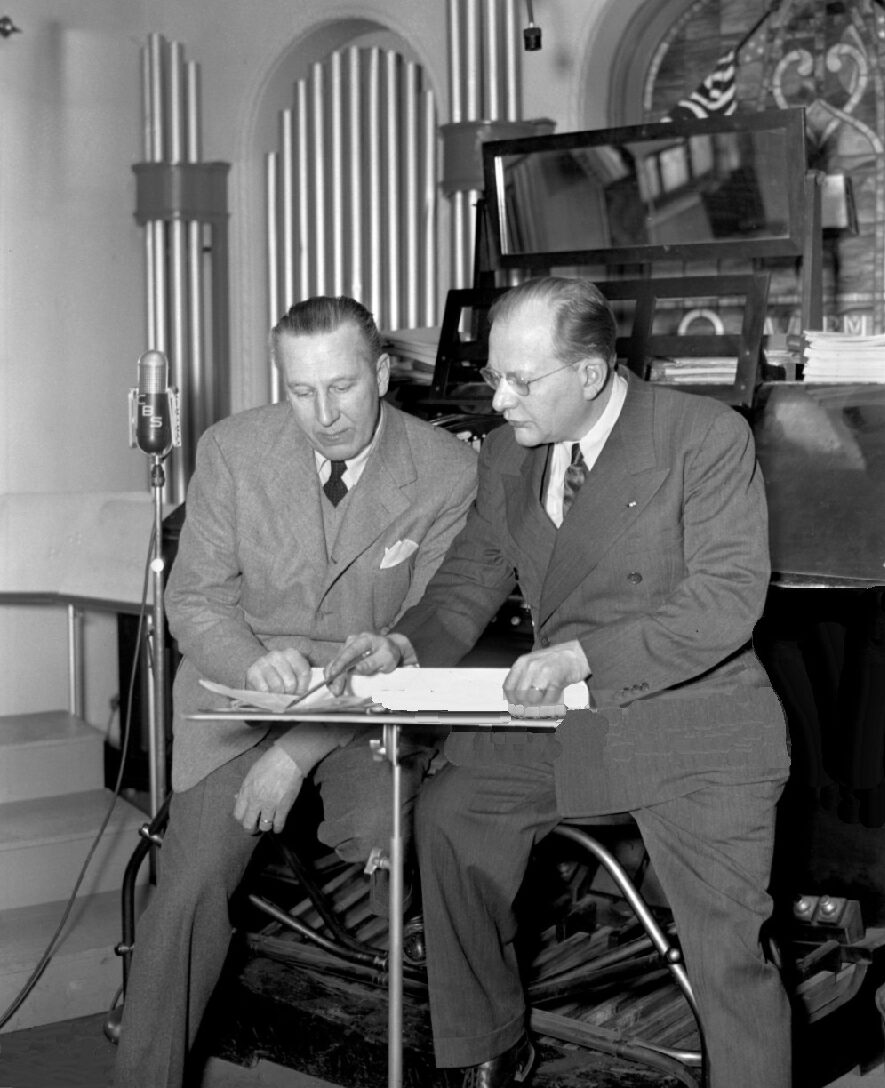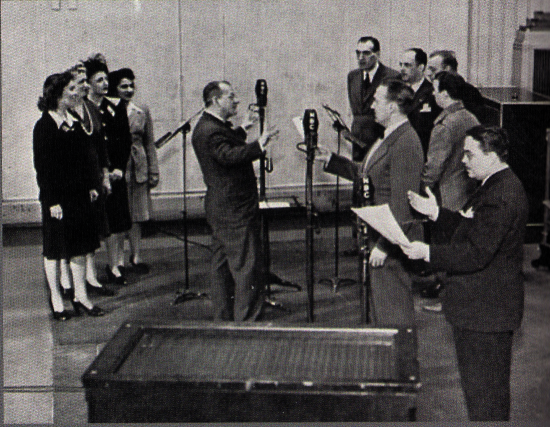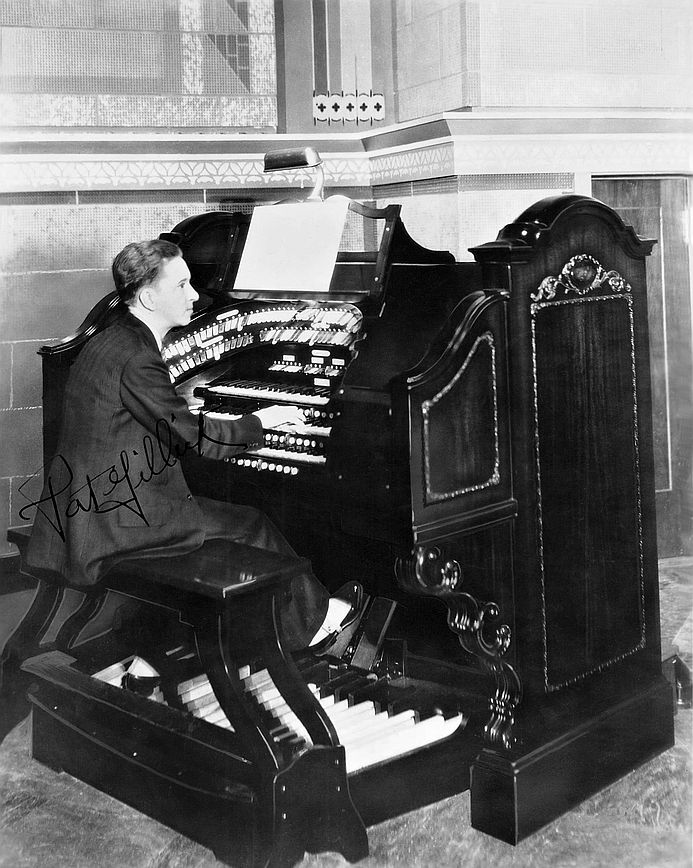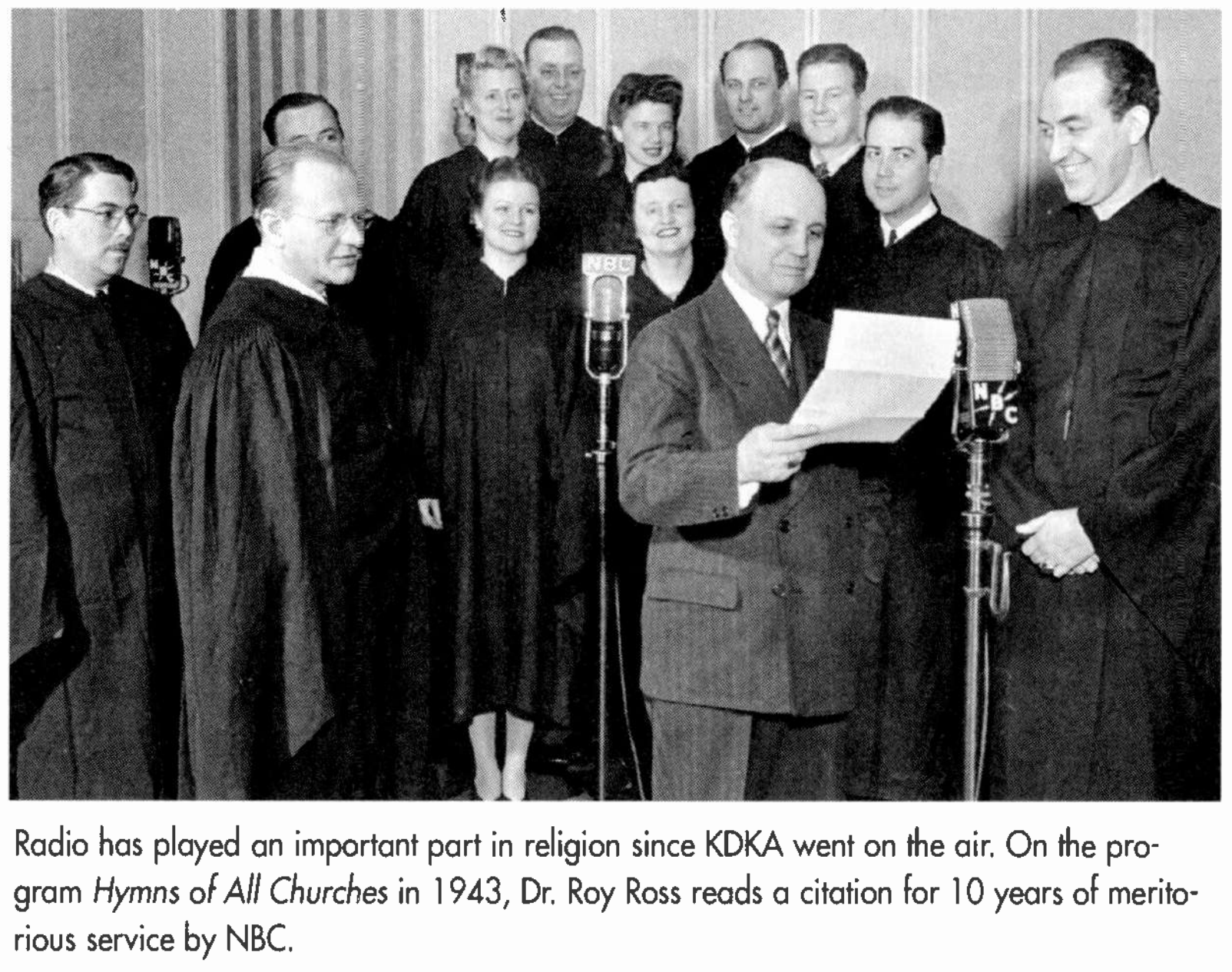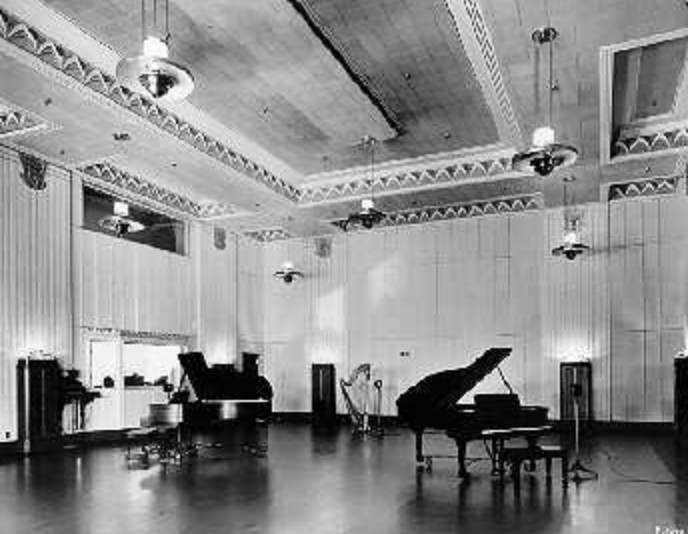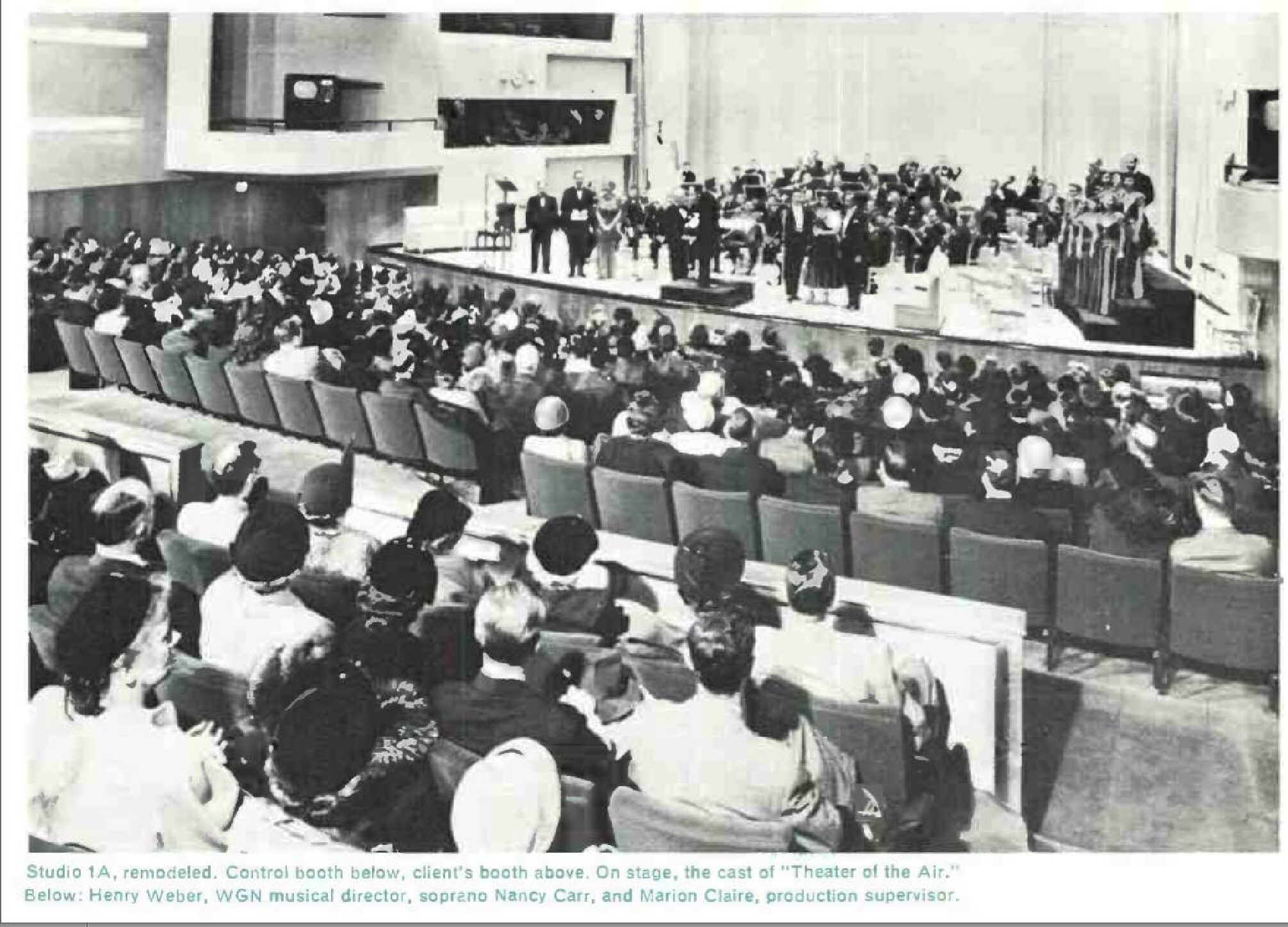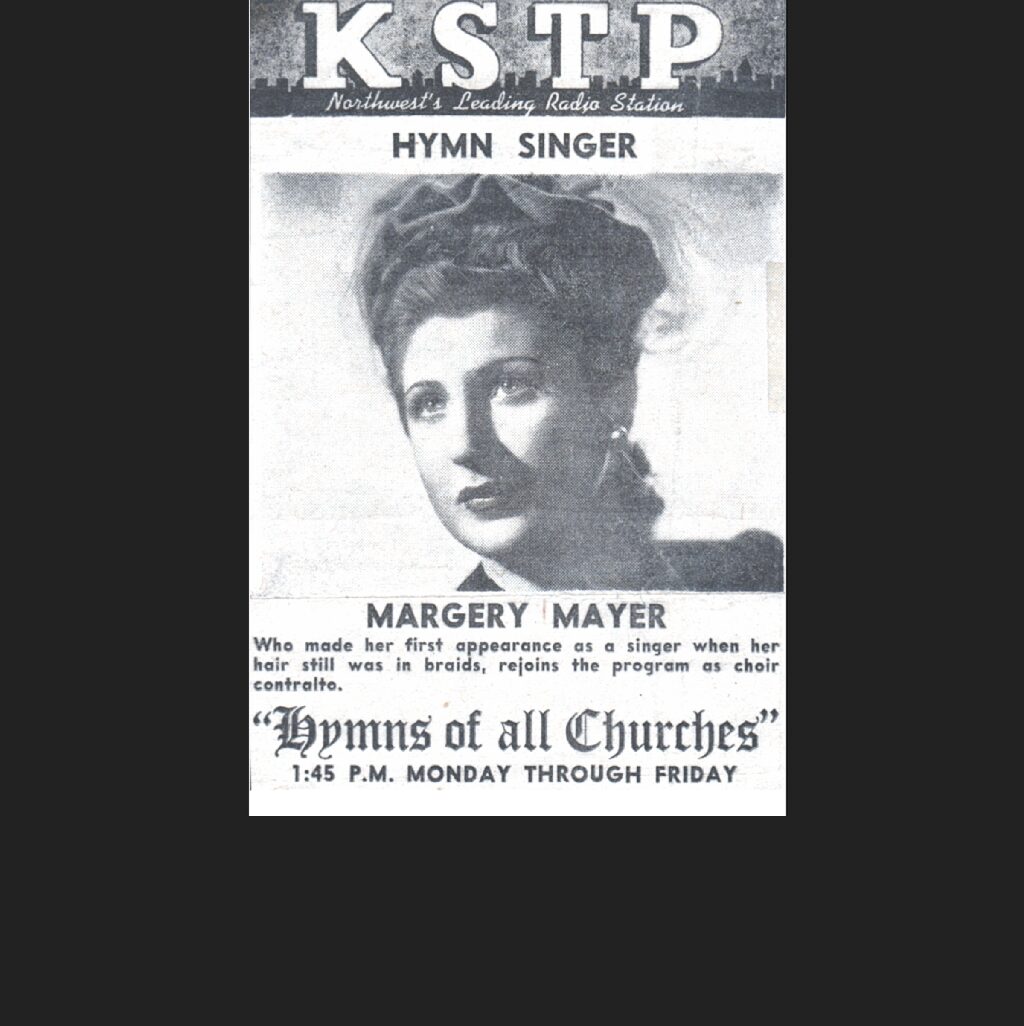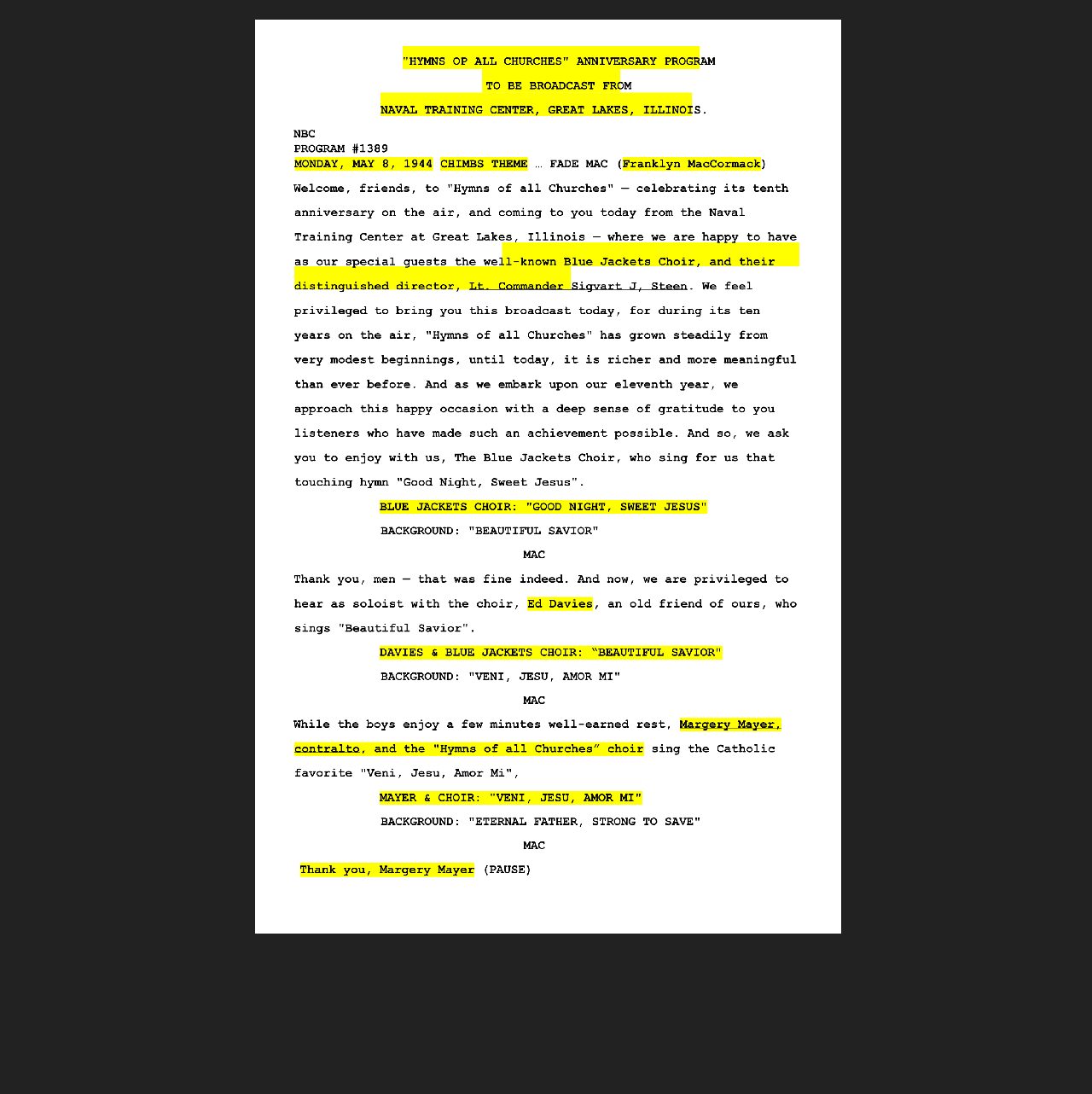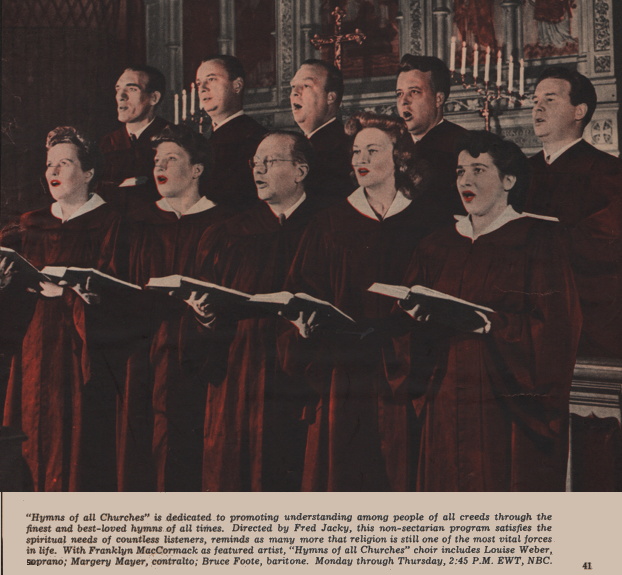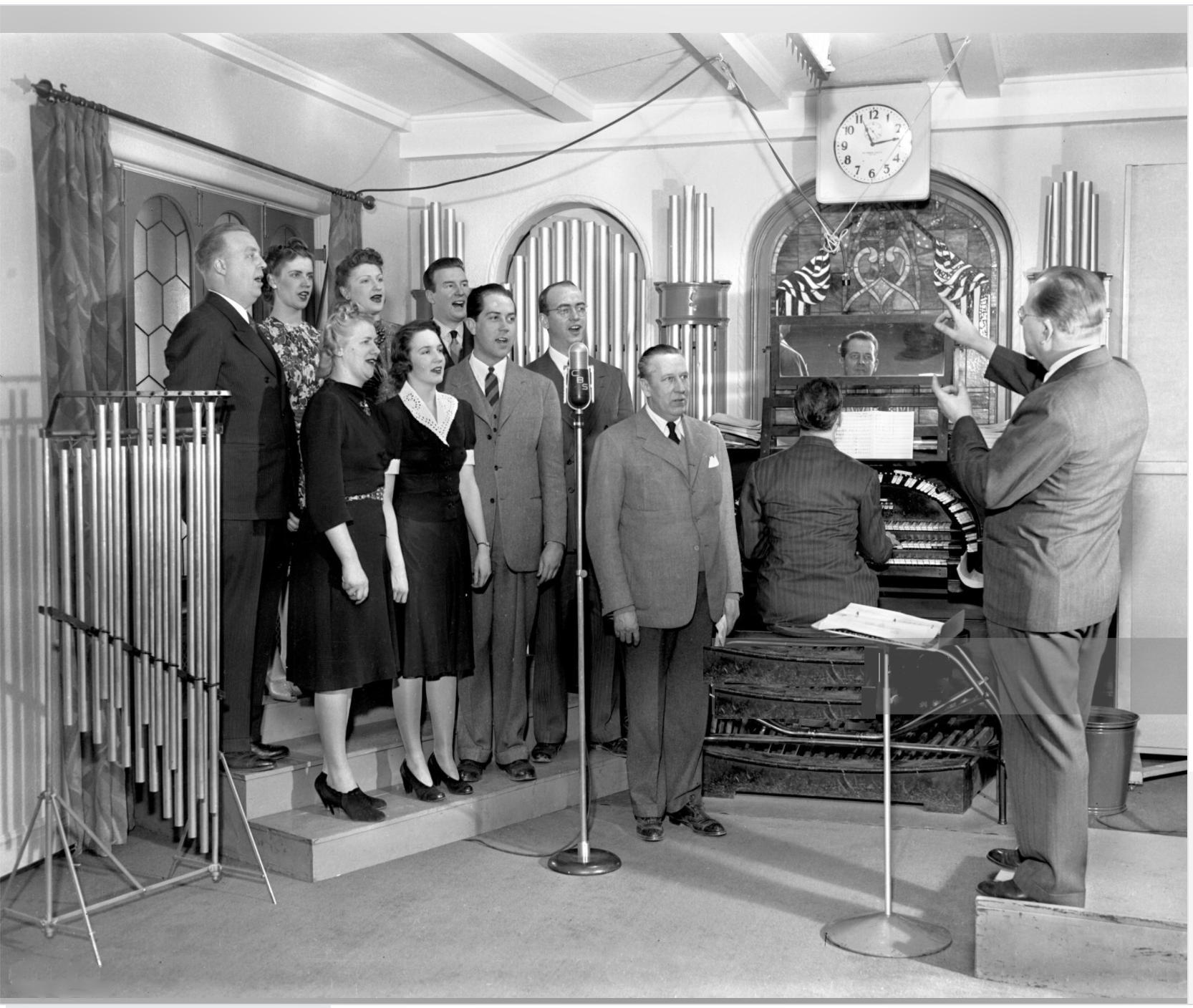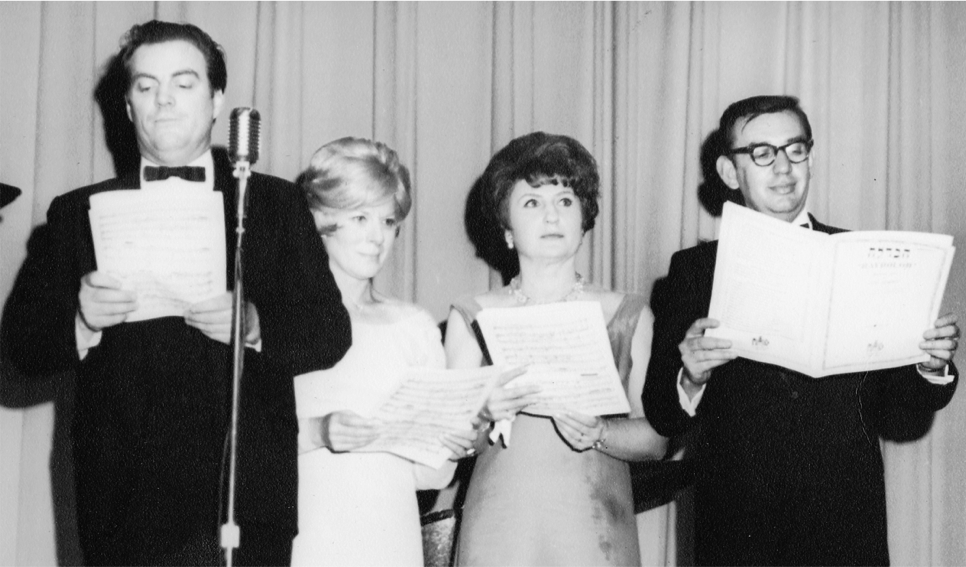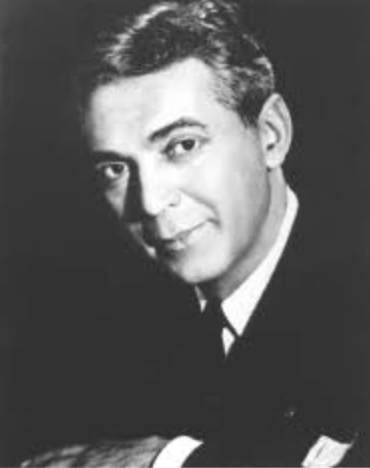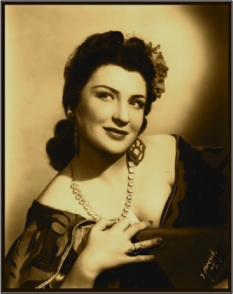.
.
MISS MAYER GAINED WIDE REKNOWN ON INSPIRATIONAL PROGRAMS DURING WW II AND LATER AS PROFESSIONAL SOLOIST WITH RELIGIOUS INSTITUTIONS..
.I. ‘Hymns for All Churches,’ a daytime radio broadcast that originated in the ‘Great
….Depression,’ gained a loyal nationwide audience during and after World War II.
Quoting its founder and baritone soloist, Joe Emerson, “’Hymns of All Churches’ (was) dedicated to promoting understanding among people of all creeds through the finest and best-loved hymns of all times. Directed by Fred Jacky, this non-sectarian program satisfied the spiritual needs of countless listeners, reminded as many more that religion is still one of the most vital forces in life. With Franklyn MacCormack as featured artist, ‘Hymns of All Churches’ soloists included Louise Weber, soprano; Margery Mayer, contralto; Lillian Chookasian, contralto; and Bruce Foote, baritone”.
From her first signing in June 1939, through 1947, “Hymns of All Churches” was for Margery Mayer a regular three to four day weekly commitment (and reliable income generator). As with her soloist colleagues, Miss Mayer, attracted regular listeners from across the nation, and their favorite requests were frequently recognized in dozens of broadcasts in which she was featured as soloist.
Around this mainstay, the tabs on this site account for many trials and successes Miss Mayer had while still in her twenties. These included launching an opera career with four companies, auditioning twice for the Metropolitan Opera, getting married, having a baby, tending for a terminally ill husband, becoming a single parent (with assistance from her relatives), coping with wartime economic deprivations and transit challenges, while twice touring coast-to-coast appearing in lead roles to popular acclaim, and even getting married a second time.
The Playlist above contains 12 selections reflecting the evolving needs and moods of the country spanning from 1943, a period of dark despair, up through 1946, with a decidedly more hopeful, upbeat post-war citizenry. Tracks 2 through 9 are all from a singular “Hymns of All Churches” broadcast, the afternoon after the D-Day Landing in Normandy, France, including the first dramatic reports from the battle front.
| Day | Year | Margery Mayer Solos as known about | 2nd Solos/Duets | Third Solo |
|---|---|---|---|---|
| Mon | 6/26/1939 | Margery Mayer signed to Hymns of All Churches. | ||
| Mon | 1/15/1940 | Rejoined Hymns of all Churches after complete recovery from hospital minor operation | ||
| Thu | 8/1/1940 | Substitute for Mayer in Hymns of all churches due to pregnancy | ||
| Sat | 11/30/1940 | 1st Metropolitan Opera Audition of the Air | ||
| Margery Mayer may not have sung with Hymns of All Churches from August 1940 to May 1943 (pregnancy, sickness and death of husband, and San Carlo Opera Tours) | ||||
| Thu | 8/13/1942 | Margery Mayer is mentioned as singing with HoAC and had been a Met semifinalist | ||
| Sun | 1/3/1943 | Mentioned as singing with HoAC and winning praise for Siebel in Faust with Chicago Opera | ||
| Sun | 1/31/1943 | Mayer established as 5 years with Chicago Opera and used for Hymns of All Churches publicity (nationwide) | ||
| Mon | 3/29/1943 | Mayer rejoins Hymns of All Churches after second tour with San Carlo Opera Company. | ||
| Sun | 5/9/1943 | Hymns of All Churches Enters its 10 th year (9th anniversary). Three soloists mentioned: Gloria Swanson, Margery Mayer and Lillian Chookasian. | ||
| Tue | 9/14/1943 | O'er Waiting Harpstrings of the Mind (Mary Baker Eddie Hymn) | "Move Up the King's Highway" Spiritual, duet with tenor | |
| Mon | 10/18/1943 | "Saved by Grace", Duet with Bruce Foote | ||
| Mon | 1/3/1944 | 2nd Metropolitan Opera Audition of the Air (carried nationwide, including on St. Louis, KXOX 1:30) | ||
| Wed | 9/20/1944 | O'er Waiting Harpstrings of the Mind (Mary Baker Eddie Hymn) | "Deep River" | |
| Tue | 3/27/1945 | "He Never Said a Mumblin' Word" (Has dropped in from tour with San Carlo Opera) | ||
| Sun | 5/6/1945 | On tour again with San Carlo Opera | ||
| Wed | 5/16/1945 | "Father See Thy Suppliant Children" | ||
| Mon | 7/2/1945 | Margery Mayer and :Lilli Choukasian are the Contraltos on Hymns of All Churches | ||
| Mon | 7/9/1945 | "Have Thine Own Way Lord" | ||
| Mon | 7/16/1945 | "Sometimes I Feel Like a Motherless Child" | ||
| Mon | 7/23/1945 | Twenty-third Psalm, The Lord is My Shepherd - James Montgomery | "If I have wounded" | |
| Thu | 8/2/1945 | Twenty-third Psalm, The Lord is My Shepherd - Malotte | I Need Thee Every Hour | |
| Mon | 8/6/1945 | "Deep River" | "Saviour, Breath an Evening Blessing" | |
| Tue | 8/14/1945 | "Veni Jesu Amor Mi" | "Ivory Palaces" | VJ-Day |
| Mon | 8/20/1945 | "Steal Away" | "Whispering Hope" | "Beneath the Cross of Jesus" |
| Mon | 8/27/1945 | "The Rosary" - Ethelbert Nevins | ||
| Wed | 9/5/1945 | "Nobody Knows the Trouble I've Seen" | "Lead Me Gently Home" - Duet with Soprano | |
| Wed | 9/12/1945 | "The Lord Is My Shepherd" | "Lead Kindly Light" | |
| Wed | 9/19/1945 | "O Dreamer Leave They Dreams" to the tune of Danny Boy | ||
| Fri | 9/28/1945 | "As Thou Wilt" | "Odom Olom" | "Beneath the Cross of Jesus" |
| Thu | 10/11/1945 | Whispering Hope | ||
| Thu | 12/6/1945 | Swing Low | The Eastern Gate | |
| Tue | 1/8/1946 | Lead me Gently Home - Duet with Margery Mayer and Louise Weber | ||
| Thu | 1/24/1946 | Steal Away | Brood O'er Us | |
| Tue | 3/19/1946 | If I have Wounded Any Soul Today | ||
| Thu | 3/28/1946 | Twenty-third Psalm, The Lord is My Shepherd - James Montgomery | ||
| Tue | 4/2/1946 | Just as I am | Love one another | |
| Fri | 8/16/1946 | The Quiet Hour - Duet with Margery Mayer and Louise Weber | ||
| Mon | 8/19/1946 | Steal Away | ||
| Tue | 3/25/1947 | Bless This House | ||
| Thu | 4/10/1947 | Nobody Knows de Trouble I've Seen | ||
| Mon | 5/5/1947 | The Twenty-third Psalm | ||
| Tue | 5/20/1947 | The Lord is my Shepherd | ||
| Tue | 6/3/1947 | Shepherd Show Me How to Go | ||
| Mon | 7/21/1947 | Goin' Around Takin' Names | ||
| Mon | 8/4/1947 | Ivory Palaces | O Lord, I am not Worthy | |
| Thu | 8/14/1947 | O'er Waiting Harpstrings of the Mind |
.
II. Margery Mayer was soloist consecutively at two Jewish Reform Synogogues, in the
….Chicago and New York metropolitan areas respectively, from 1939 – 1974.
Miss Mayer was soloist with the choir at North Shore Congregation Israel, Glencoe, Illinois, for periods during 1939 – 1945 under the leadership of Rabbi Charles E. Shulman and Cantor Benjamin Landsman. The following example from that period appears as track 13 on the Playlist.
- Ve’Ulai Poem by Rachel Blaustein, Music by Yehuda Sharet.
Recorded in 1942 (perhaps one of the earliest recordings of this beloved song)
by Margery Mayer, contralto with William Sumner, organist
Miss Mayer was contralto soloist with the professional quartet at Riverdale Temple, Bronx, New York from 1948 – 1974, again under the leadership of founding Rabbi Charles E. Shulman and William Sumner as Organist and Music Director. The following example is a song for Evening Shabbat and is track 14 on the Playlist.
- Hashkivenu Music by Pender.
Recorded in 1955 on “Songs of Riverdale Temple” album
by Margery Mayer, contralto and William Sumner, organist,
and introduction by Rabbi Charles E. Shulman.
The following is an alternative Playlist containing only selections by Miss Mayer from this page:
